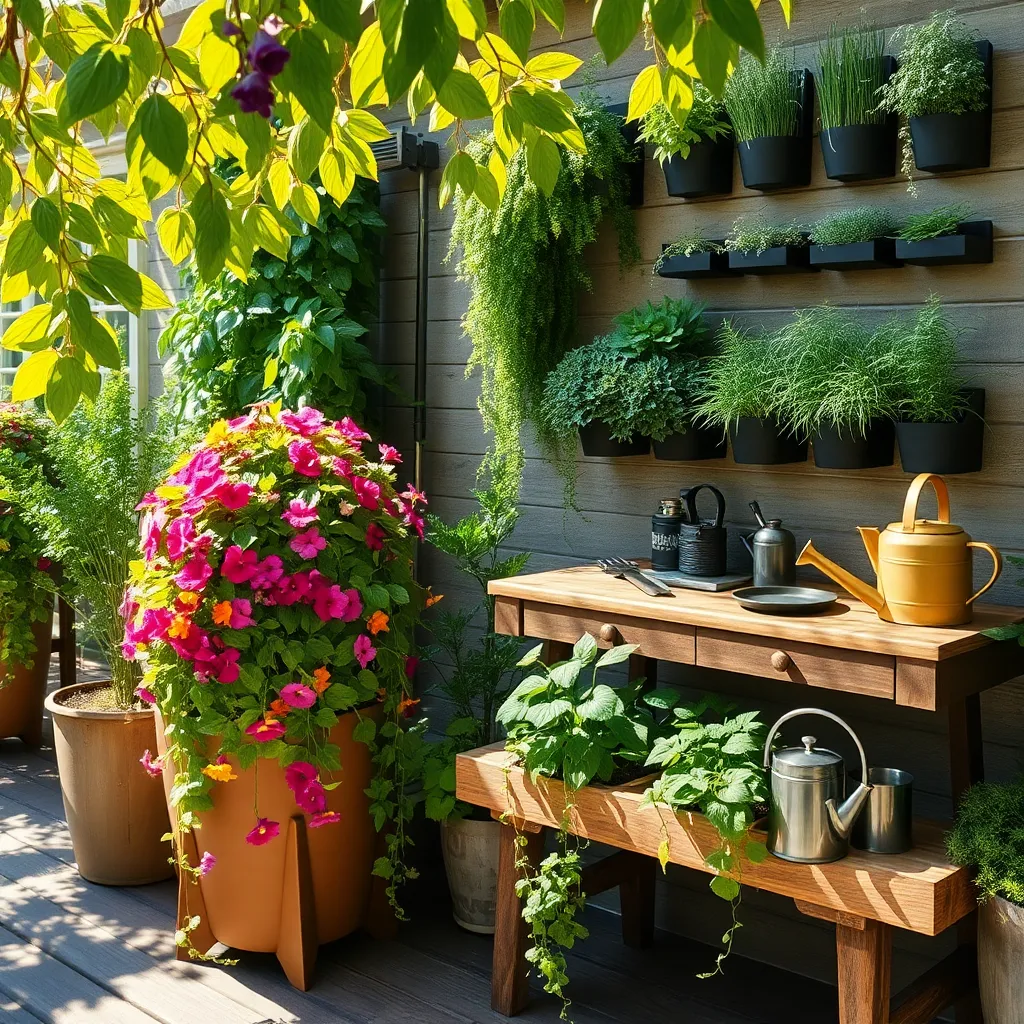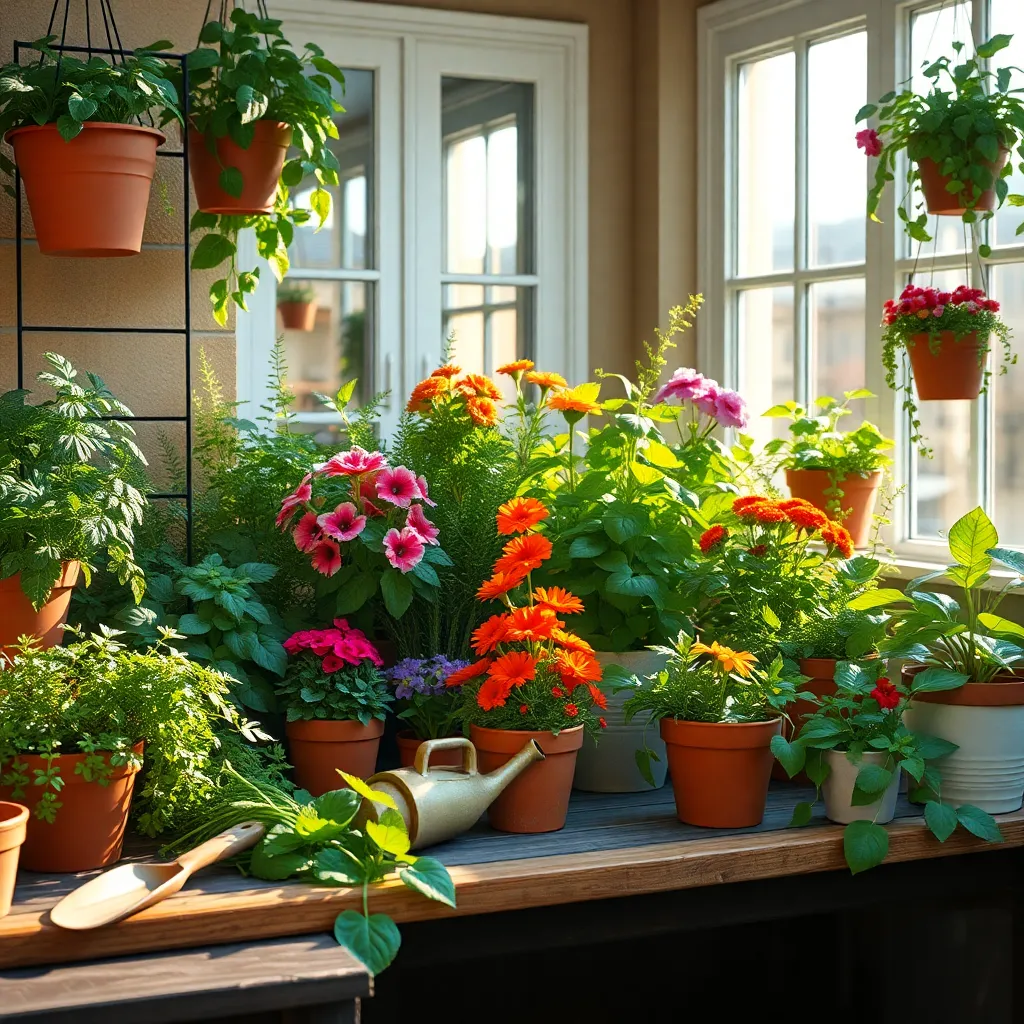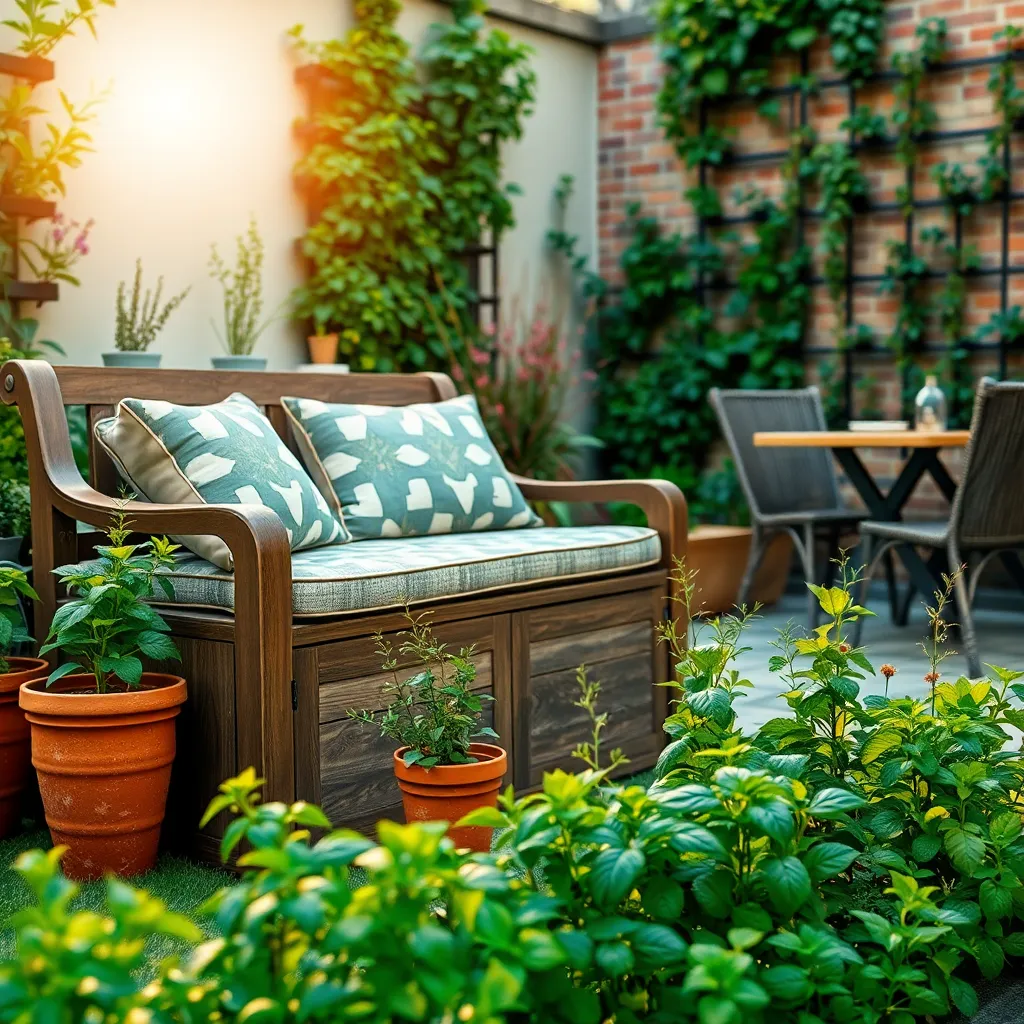Imagine a world where your small yard transforms into a lush, vibrant oasis, a space that reflects your personality and creativity while providing a sanctuary from the hustle and bustle of daily life. Whether you’re just planting your first seed or you’re a seasoned gardener looking to maximize every inch, “Gardening for Small Yards: Tips and Ideas” is here to guide you on this rewarding journey.
In this compact guide, you’ll discover innovative design solutions and practical techniques that make the most of limited space. Each tip is crafted to inspire and empower you to create a garden that not only thrives but also brings immense joy and satisfaction.
By embracing these strategies, you’ll not only enhance your gardening skills but also cultivate a sense of pride and accomplishment. Let this guide be your companion as you embark on a gardening adventure that promises beauty and bounty, no matter the size of your yard.
Maximize Space with Vertical Planters

Vertical planters are a fantastic way to make the most of limited space in small yards. They allow you to grow a variety of plants while adding a striking visual element to your garden.
Consider using a variety of containers such as wall-mounted planters, stacked pots, or hanging baskets. These options can be easily adapted to fit your space and offer flexibility in plant selection.
For beginners, start with hardy plants like ferns and succulents that require minimal maintenance. Ensure these plants have good drainage and are placed in a location that receives sufficient sunlight.
More advanced gardeners might experiment with vertical vegetable gardens. Plant leafy greens like spinach and lettuce in a vertical setup, ensuring they have access to at least six hours of sunlight per day.
When it comes to soil, use a lightweight potting mix that retains moisture yet drains well. This will prevent root rot and promote healthy plant growth in a vertical setup.
Regular watering is crucial as vertical planters tend to dry out faster than traditional garden beds. Aim to water them thoroughly every two to three days, adjusting based on climate and plant needs.
Choose Compact Plant Varieties

When gardening in small yards, choosing compact plant varieties can make all the difference. Opt for plants that naturally grow smaller or have been bred to thrive in confined spaces, ensuring they don’t outgrow their environment.
Dwarf varieties of popular plants such as tomatoes, peppers, and even fruit trees can be excellent for small spaces. These plants provide full-sized produce without taking up much room, making them a smart choice for maximizing your garden’s productivity.
Consider using container-friendly perennials like lavender, dwarf conifers, or ornamental grasses. These plants not only fit well in tight spaces but also add texture and color, enhancing the aesthetic appeal of your garden.
For those with a penchant for flowers, compact annuals like marigolds, petunias, and zinnias are ideal. They can be grown in pots or as border plants, offering vibrant blooms throughout the season with minimal space requirements.
Incorporate a mix of these compact varieties in your garden to create a lush, diverse ecosystem. Regularly monitor their water and nutrient needs, as smaller plants in confined spaces may dry out or deplete soil nutrients faster.
Utilize Multi-Purpose Garden Furniture

Utilizing multi-purpose garden furniture can significantly enhance the functionality of a small yard. Choose pieces like benches with built-in storage or tables that double as planters to maximize your space efficiently.
Consider investing in foldable furniture that can be easily stored away when not in use. This flexibility allows you to quickly transform your garden from a planting area to a social space, making the most of every inch.
Look for lightweight materials such as aluminum or recycled plastic for easy rearrangement and maintenance. These materials are also weather-resistant, ensuring your furniture lasts through various seasons without requiring extensive care.
Incorporating furniture with multiple uses encourages a more seamless integration of gardening and leisure. For example, a vertical garden frame with seating can provide a lush backdrop while offering a cozy spot to relax amidst your plants.
Advanced gardeners might consider installing a garden bench with a built-in composting unit. This not only provides a comfortable resting place but also enriches your soil, promoting healthier plant growth.
Incorporate Reflective Surfaces for Light

In small yards, incorporating reflective surfaces can significantly enhance the available light, making plants thrive even in shaded corners. Mirrors are a great option to bounce sunlight into darker areas, creating a brighter and more inviting garden space.
Reflective surfaces such as polished metal or water features can also be strategically placed to increase light exposure. By positioning these near light-loving plants like lavender or roses, you can provide the necessary sunlight they need for healthy growth.
To maximize the benefit, ensure that reflective surfaces are angled to catch and redirect natural light towards your plants. This technique not only benefits the plants but also creates a visually appealing garden atmosphere by adding depth and luminosity.
For advanced gardeners, consider using reflective mulch, which can enhance photosynthesis by reflecting light up into the plant canopy. This is especially useful for vegetables like tomatoes and peppers that require abundant sunlight to produce a bountiful harvest.
Opt for Mobile Container Gardens

Mobile container gardens are a fantastic solution for maximizing small yard spaces. They provide flexibility to move plants around to optimize sunlight exposure and change your garden layout as desired.
Consider using lightweight containers made of plastic or fabric to make moving them easier. Ensure your containers have proper drainage to prevent waterlogging and root rot, which can be common issues in potted plants.
When selecting plants, opt for varieties that thrive in containers, such as herbs, tomatoes, or dwarf varieties of larger plants. Use a well-draining potting mix rich in organic matter to support healthy growth and reduce the need for frequent fertilization.
For advanced gardeners, try incorporating a mix of plant heights and textures to create visual interest in your mobile garden. Use vertical structures like trellises within containers to support climbing plants and maximize space utilization.
Conclusion: Growing Success with These Plants
In wrapping up our exploration of ‘Gardening for Small Yards: Tips and Ideas,’ we uncovered five key concepts to nurture not only your green spaces but also your relationships. First, we learned the importance of communication, akin to understanding the sunlight needs of your plants. Next, we discussed collaboration, just like selecting the right mix of flora for a harmonious garden. We also looked at creativity, essential for both innovative garden layouts and keeping relationships vibrant. Patience emerged as another core value, crucial for waiting out both plant growth and relationship challenges. Lastly, the need for regular maintenance highlighted the parallels between consistent care in gardens and relationships.
To take immediate action, choose one small gardening project to embark on this weekend, and involve a loved one. This shared activity will not only beautify your space but also strengthen your bond.
Save this article to revisit these insights and tips as you cultivate both your garden and your relationships. With each intentional step, you’ll pave the way for flourishing connections and a harmonious living space. Remember, the seeds you plant today in both soil and soul will yield a bountiful harvest tomorrow.

